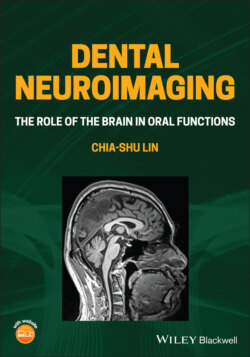Читать книгу Dental Neuroimaging - Chia-shu Lin - Страница 30
1.2.2.2 The ‘Landmark Discoveries or Concepts’: Past and Future
ОглавлениеIn their article ‘The Evolution of Neuroscience as a Research Field Relevant to Dentistry’ for the Journal of Dental Research (JDR) Centennial Series, Iwata and Sessle enlisted several achievements of orofacial neuroscience in the decades (Iwata and Sessle 2019). Many of these achievements have been made based on clinical, animal and laboratory research. For example, the gate control theory has been widely investigated from the clinical to the molecular levels. Remarkably, animal research has unravelled a complex pattern of bi‐directional projections between the stomatognathic system to the brain (Figure 1.2). Investigation of the human brain may disclose more insights on this topic. While the ‘gating’ mechanism at the spinal level has been gradually elucidated, how the nociceptive processing is translated to pain, a subjective experience, has remained a challenging issue. As noted in Chapter 6, neuroimaging methods may help extend our current knowledge in pain and its management. Another example is the investigation of neural mechanisms of mastication and swallowing, which significantly impact our understanding of oral physiology and the management of oral dysfunctions. Recent neuroimaging findings, on the one hand, confirm the evidence from animal research (e.g. the role of primary sensorimotor cortices in chewing) (Table 1.2 and Figure 1.2). On the other hand, neuroimaging findings disclose new knowledge about the role of learning and cognitive control in oral motor functions (Table 1.3). As shown in Table 1.2, many examples reveal how neuroimaging, as an exploratory tool, broadens the frontier of orofacial neuroscience into the uncharted area.
